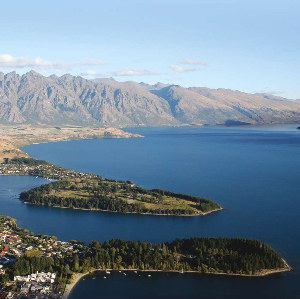NZ market more secure than Australia’s
Stability reigns in New Zealand’s property market which leaves it in a much better place than Australia’s, new data from Realestate.co.nz shows.
Friday, March 1st 2019, 9:13AM
by The Landlord

Australia’s biggest markets – Sydney and Melbourne – have seen sharp price falls in recent months but the situation is different in New Zealand
According to Realestate.co.nz’s latest data, there was 26,850 properties for sale in February, which was down by just 0.3% on February 2018.
But it is significantly down on five years ago (February 2014) when there were 41,731 properties listed for sale nationally.
Further, the data shows that February saw a 6.5% fall in new listings as compared to February 2018.
This decline highlights the ongoing supply shortage that many parts of New Zealand are continuing to struggle with.
Around the country, most regions – including Auckland - recorded falls in new listings in February.
Of the five main regions, only the Wellington region recorded an increase in new listings in February: it was up by 6.9% as compared to February 2019.
Realestate.co.nz spokesperson Vanessa Taylor says this situation contrasts with that in Australia where there’s reportedly a long-term high in the number of properties sitting on the market.
New Zealand’s property market is in a good place and there was a sense of relative stability during the month of February, she says.
“We’ve been through the heady days of frantic activity and uncertainty and we have found our new normal.
“It’s characterised by a steady market, stable pricing and a pragmatic approach by buyers and sellers.”
However, the real estate listings website’s data does show that nationwide average asking prices were down by 2.8% to $675,727 in February, as compared to January.
Taylor says that some regions saw prices increases while others saw price falls which evened out the result across the country.
The national price decline also needs to be taken into context of a big January, when there was a record asking price, largely driven by increases in the smaller regions, she says.
“As a result, we are seeing a slight adjustment in February, although four regions still recorded all-time average asking price highs in February.”
Those regions were Gisborne (up 6.7% to $445,938), Waikato (up 3.5% to $609,771), Manawatu / Wanganui (up 1.4% to $387,122) and Central North Island (up 1.2% to $498,380).
Across the country there is an ongoing see-saw for the top spot in average asking price between the Central-Otago Lakes region and the Auckland region.
Taylor says the Central Otago-Lakes area was up 7.5% to $1,010,021 in February, which means it has leapfrogged over the Auckland region’s average asking prices once more.
“This is mainly due to some top end properties hitting the market in the Queenstown district.”
In contrast, Auckland’s average asking price lifted by a mere $233 to $960,715 in February, as compared to $960,482 in January.
Taylor adds that, overall, the market is a more stable environment where buyers and sellers can have more certainty and realistic expectations about what they can achieve.
| « Scope of CGT likely to narrow | Consents at 44 year high » |
Special Offers
Comments from our readers
No comments yet
Sign In to add your comment
| Printable version | Email to a friend |



